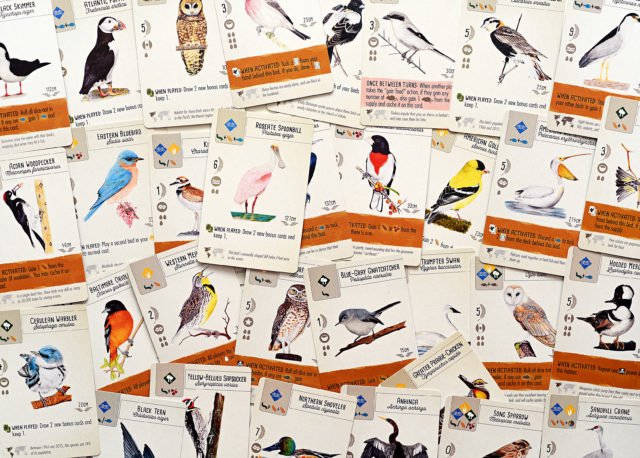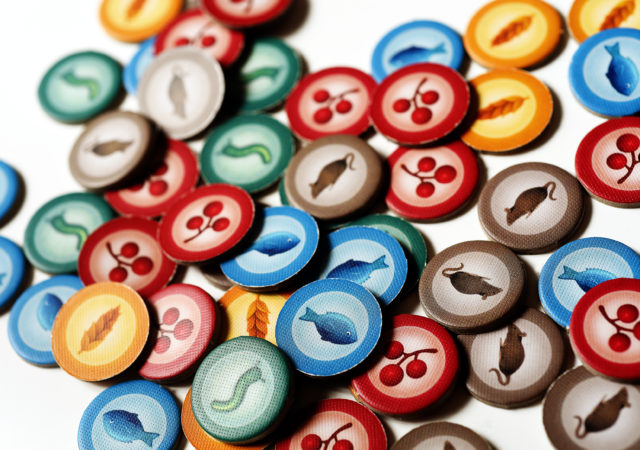When I was young, I would avidly peep my backyard for all sorts of birds – we had a birdbath in which Galahs would come by and splash around in, and a feeder that I’d mostly see Rainbow Lorikeets at – sometimes if I were lucky I might see a Rosella. Whenever I’d go bushwalking, I’d keep an ear out for the fantastic Lyrebirds. And as I walked to school I’d especially keep my eye out for Magpies and their swooping tendencies in breeding season. Since I’ve been living in North America, the birds I see on the regular are quite different, but it’s a joy nonetheless. Of course there’s the ubiquitous urban pigeon, which I’m familiar with – but I’ve been amazed at seeing a Blue Jay just hanging out in a park in Halifax, and during a stroll through Queens Park here in Toronto I saw a Red-tailed Hawk perched in a tree with its lunchtime snack. All this is to say – birds are some of my favourite wildlife to see around me in daily life.

It should come as no surprise to you, then, that as soon as I heard about Wingspan I was struck with an immediate need to play, before even knowing what the game was like, or who had even designed or published it. “Birds! More of this, please!”, I thought. I’ve even been dabbling in trying to design a bird game! In a similar fashion, I was very on board when friends offered to play Songbirds and Piepmatz in recent years, and I have a copy of the gorgeous Tweeet from Cwali on my shelf. Animals are pretty much guaranteed to grab me as a theme, but there’s just something purely delightful and fairly non-confrontational about bird games. So just going in with the lure of the the gorgeous Scissor-tailed Flycatcher on the cover, I learned Wingspan and what it was all about.
And before I could even read a word, I was enthralled. It’s not just the cover that’s a work of art – this whole game is a joy to look at and play. As soon as I touched the rulebook I gasped, dear reader – it’s got this lovely finish, and quality paper. Beyond that, the wonderful little dice tower, the tokens and eggs with their own containers, and the lovely card container that doubles as the space for displaying bird cards for players to draw from throughout the game – all lovely touches that come together to not just give you the feeling you’ve gotten an A-grade product, but everything’s been tied together thematically down to a tee. The palette and graphic design are really lovely, and laid out on the table the game’s got some amazing presence. But of course – the card art is the kicker here. Every bird is uniquely illustrated – yes, that’s 170 cards – with care and detail, and beyond the gorgeous look, there’s a great little factoid about every bird at the bottom of the card. And if you know me, you know I love me some animal trivia, friends. So, welcome to this damn fine looking game – let’s take flight!

Acting as wildlife enthusiasts, players are looking to attract birds to a network of preserves (originally players were looking to capture birds for their aviaries and I love this revised outlook in the rules so much better). But this isn’t about you, come on! It’s about those gorgeous birds – you’ll be placing them in appropriate habitats throughout the game, based on their needs. Over 4 rounds, your player board will populate with birds – and as they take their place, not only will each of the four actions available to you become stronger, and perhaps you’ll have a benefit immediately from that bird as it is placed, but there’s also more of a chance to trigger the particular benefits or actions of other birds. Because, like any good ecosystem, things are linked in Wingspan – after taking food, laying eggs or drawing cards, you’ll then work your way to the left through all of the birds in that habitat, triggering their brown powers. Perhaps if you take the chance to obtain food from the bird feeder dice tower, a bird in your forest might then be able to scavenge something; laying eggs may allow a certain bird to lay extra; and so on. Everything is a network of choices and the keen wildlife enthusiast will make the most of that – and not only will you trigger something in your little web, but some players might have birds in their habitats with pink powers that will benefit from your actions ( sneaking in to steal some leftovers, perhaps!).
Throughout the game, you’ll be managing your hand of bird cards (I’m sure worth more than 2 in the bush), gathering resources and planning out actions to best suit your strategy for the game. Where birds are most at home isn’t going to be the only motivation for you attracting certain birds to certain habitats, however. While there is standard scoring for every game (points for eggs, cached food, and the values on every bird), you’ll also be guided by secret bonus cards and the variable setup of end-of-round scoring tokens. Players start the game with a bonus card, and hopefully that gives you the time to work towards extracting as many points from that as you can. There will be chances throughout the game to get new bonus cards, and this can be handy, but can often be a little bit of a crapshoot if you get them too late in the game. But, hey! It all counts if you manage to hit some of them for points. I’m personally just delighted by all the sorts of scoring – perhaps I’m looking to attract more birds with colours in their names, named after people, or that nest in a certain way. It gives a fun, thematic touch to this mode of scoring.

For me, it’s the end-of-round goals that can be far more challenging and satisfying at the same time, either trying to break out early on in that first round, or building up to whatever scores later. Maybe they’ll work with your secret objectives, maybe they won’t. Perhaps you can sacrifice one for doing well on the other rounds. There’s a decent amount of flexibility there, and knowing that your whole game won’t hinge just on these scoring objectives is a relief. Having played both versions of the scoring board, I think both are well done and would happily play either depending on what my group was feeling – do we all just want a chance to tick the box of a goal completed (non-confrontational side) or try and gain some extra points for being a little better at certain goals (the competitive side). I love seeing this as an option in a game, because it can really change up the feel of things and certainly gives it a broader appeal when considering the types of board gamers who’d be interested in either or both modes.
For this type of game, the player interaction – any triggering of pink powers, competing for end-of-round points – seems just right. There’s plenty of time for you to manage your strategy and not lose sight of what other players are up to. With the range of cards available, and the variable setup each game, I think my only complaint is that I wish the game went just a smidge longer – 5 rounds, instead of 4? Perhaps it’s just my desire to build up my lovely bird preserve that has me wanting more – I’m sure that the game sits at 4 rounds for many reasons! Much of that likely has to do with how the game scales with player counts, which is done pretty well. Having played primarily at 3 and 4 players, it’s been quite enjoyable – and I gave the solo rules a turn, too! The automa is really well designed and makes the flow of the solo game work really well, but overall the gameplay didn’t grab me as much as 2+ players does. I’m overall really impressed with the general gameplay feel with regards to not just the round by round actions and decisions, but these more “meta” ideas of a game and how it feels when you sit back and ponder at the end of scoring and consider your experience.

I think it’s safe to say – I’m just cuckoo for Wingspan. You might even call it an.. Audu-bonne experience. An eggs-cellent time? I’m sorry, and I’m glad you got this far, friend. Make sure you get this game on March 8th, like the early bird catches the worm.
—
Wingspan is a card game for 1 – 5 players, taking approximately 45 – 60 minutes to play. Designed by Elizabeth Hargrave, with art by Ana Maria Martinez Jaramillo, Natalia Rojas, and Beth Sobel, it’s published by Stonemaier Games. Thank you to Stonemaier for providing us a review copy!
Comments
No comments yet! Be the first!